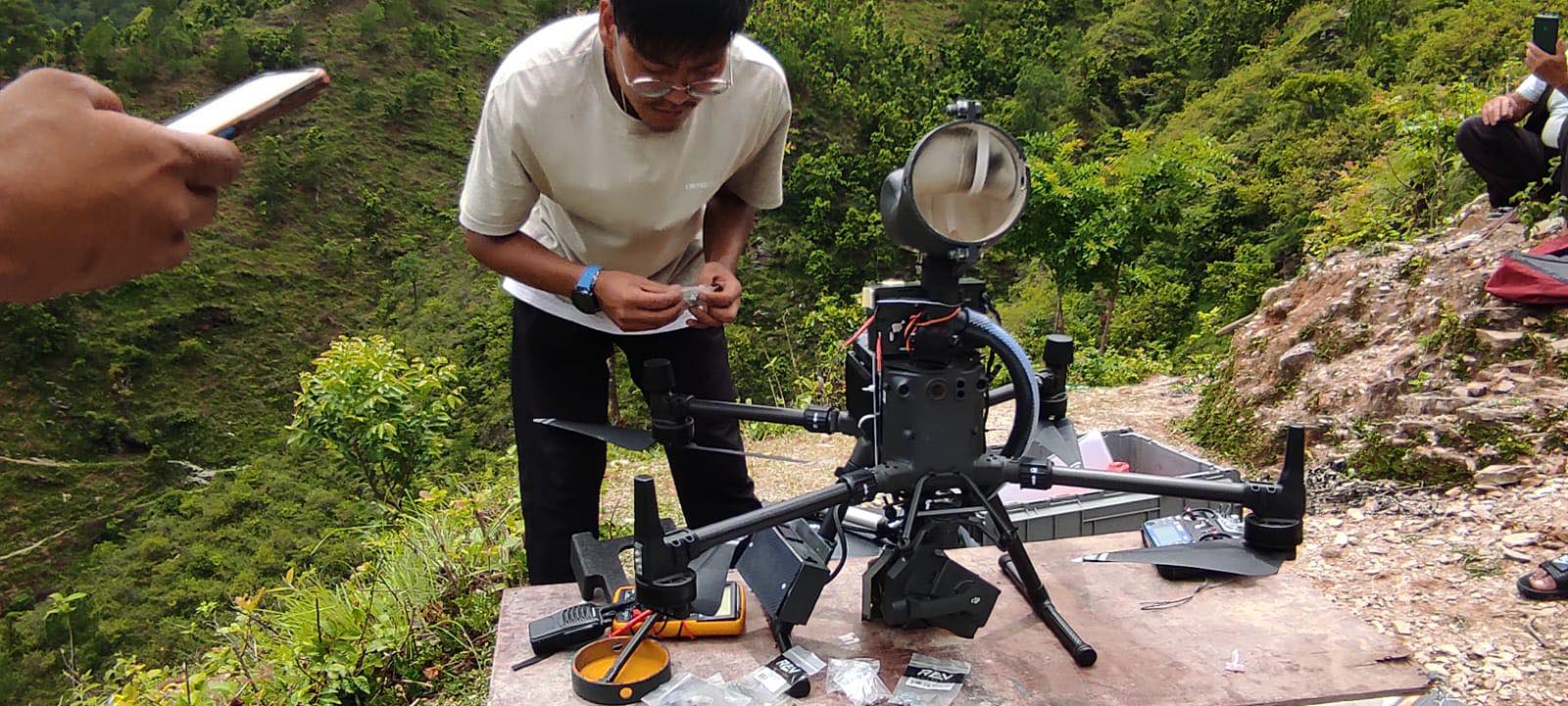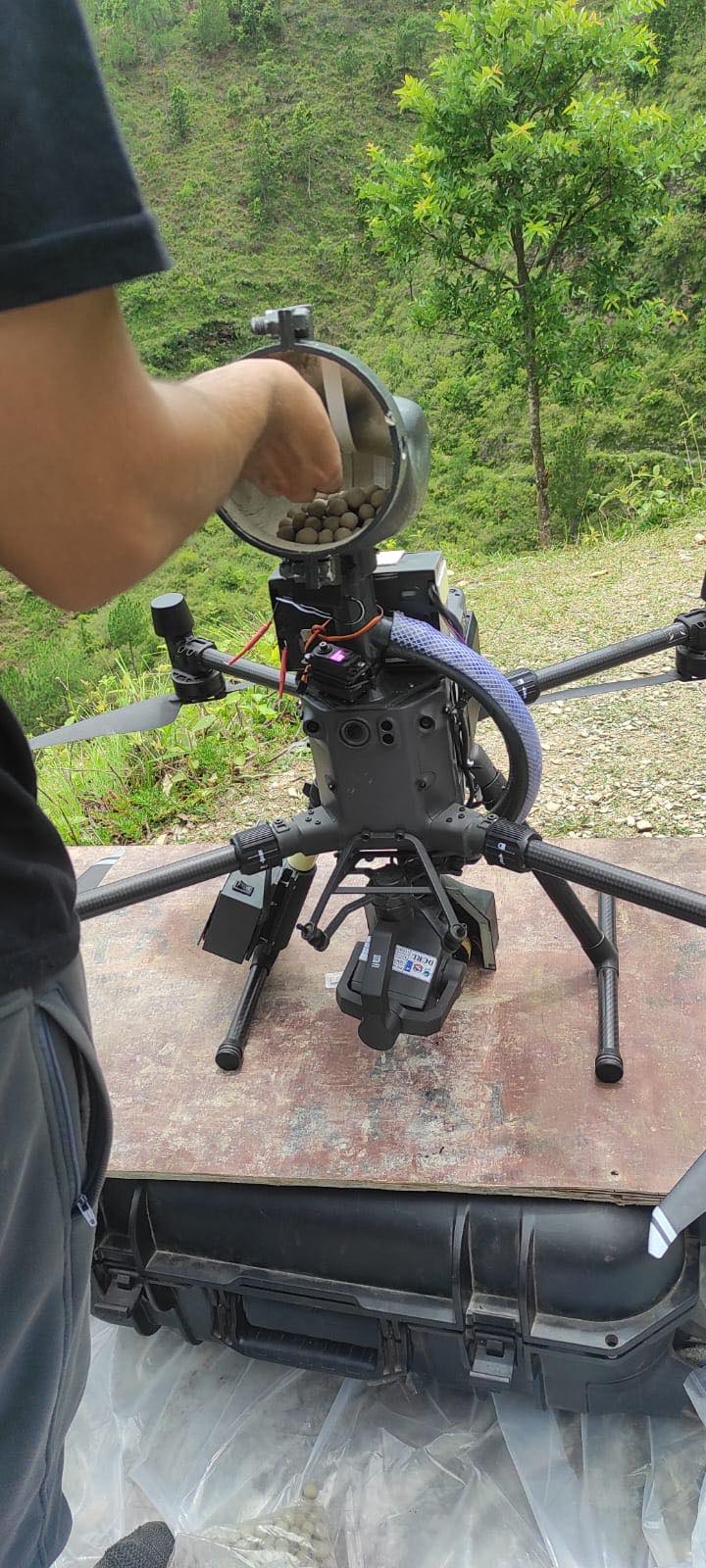Flying for the Forests in Nepal: Can Seeding Drones Save Degraded Areas?
January 11, 2024

Nepal, once a country of lush green forest has been facing the adverse effects of climate change due to deforestation. It is one of the pressing environmental issues having immediate consequences in the lives and livelihood of millions of people, particularly in rural communities leading to increased fuel scarcity, reduced supply of fodder, and leaf-litter manure. The unpredicted erosion, landslide, and lowland flooding, due to deforestation, are also major concerns in Nepal. It is vitally important to regenerate forests and plant new trees to combat the effects of deforestation. Reforestation is therefore a fundamental requirement for the reversal of land degradation in Nepal and to restore watershed ecosystem functions. However, the terrain of most watersheds in Nepal is dramatically steep making normal reforestation operations challenging meaning alternative solutions should be explored.
Developing Climate Resilient Livelihoods (DCRL), a joint initiative of the Ministry of Forests and Environment and UNDP funded by the Global Environment Facility, piloted the drone-based seeding to bring greenery back to the barren landscapes in the difficult terrain of Khotang and Okhaldhunga district. As the majority of the landscape in Okhaldhunga and Khotang is characterized by a steep average slope, seeding through UAV drone is an appropriate option for reforestation.

DCRL adopted Aerial Seeding technology using UAV drone in partnership with the Institute of Engineering, Pulchowk, and a team of young innovators from Geovation Nepal. This is the first initiative where a multidisciplinary team together with robotics and geomatic engineers locally customized the UAV drone to perform aerial reforestation using seed balls, which are bombarded in the degraded land area. The seed balls constitute seeds of the tree species that are native and appropriate for the terrain and altitude along with manure and other nutrients so that it has a greater chance of survival which will allow restoration in a relatively shorter time.
The project identified and prioritized degraded land in Okhaldhunga and Khotang districts having less than 10% canopy, with steep slopes based on UAV Drone survey mapping and geospatial analysis. The seed bombing was done in four degraded sites in Khotang and Okhaldhunga district at a pilot scale. The seed balls were carefully fit into the drone’s funnel and the seeding process was conducted by deploying seeds from an altitude and trajectory through a customized UAV drone in each target location.
“I found this technology quite fascinating as it can transform the degraded areas of Nepal in a short time in cost-effective manner. The use of drone technology for reforestation is a new invention that is quite relevant for highly drought-prone districts like Khotang. However, in order to generate positive results, it is essential to select appropriate sites and conduct regular monitoring,” said Bimala Rai, Mayor, Halesi Tuwachung Municipality, Khotang.
“The seeding through drone was quite impressive and was tested successfully. But it is still in nascent stage so we need to wait and watch for its result before replicating it in other areas,” Pashupati Dahal, DFO Khotang.

After the successful seed bombardment in the targeted sites, DCRL is planning for the seed bombing through drone in a large scale in other degraded areas of Okhaldhunga and Khotang District. The UAV drone will also be used for regular monitoring in the areas of seed bombing to determine success rates. Seeding via Drone is an innovative technique that could transform deforested areas in the difficult terrain of Nepal within a short period of time.
“We are very happy to pilot ariel seeding through drone in difficult terrain of Nepal. It is an innovative technology that could be the most feasible solution for the restoration of degraded land areas in a more effective and efficient method. Department of Forests and Soil Conservation (DoFSC) intends to adopt this technique in inaccessible areas of Nepal and build the capacity of its staff for using this new technology in near future,” said Ganesh Paudel, Under Secretary and National Project Director of the projet at DoFSC.

 Locations
Locations



